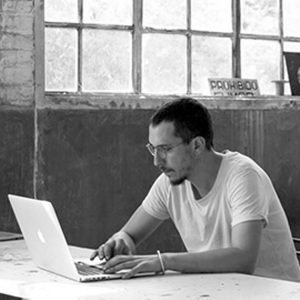
Octavi Serra (Girona, 1990) is an artist, designer and photographer. He questions the world of art and is a strong advocate of “Do It Yourself”. If he doesn’t find the opportunity, he invents it. And this is how The Posttraumatic project came about, a diary created by artists. Using irony in his pieces, he has made the streets his gallery, where his works inevitably do not last, but he is comfortable with the ephemeral destiny of his projects.
OCTAVI SERRA
2022 / 02 / 24

What are you working on now?
I’m working on the third edition of The Posttraumatic which will come out in April or May (2022).
What is it and how did The Posttraumatic come about?
It’s hard to explain, but The Posttraumatic is an artist journal that comes out twice a year. The rest of the months fanzines are published that act as supplements to this newspaper. It goes by subscription. The origin of this project is the result of the fatigue of waiting. Very often what I do to get a job is to wait or say hello to organizations so they can give me their projects. Begging here and there and that costs a lot. And with scholarships too. I guess there are a lot of worthwhile projects and a lot of people who show up. I applied for a scholarship from the Carulla Foundation, at the end of 2020, whose project was to propose pause and relax in the city of Barcelona with different interventions, and a way to archive all the actions that were carried out during this hypothetical project was in daily format. They didn’t give me the scholarship but I said that if it cost so much for projects to come out well, I’d do it myself. I spoke with different artist colleagues and we thought it would be cool if the interior [of the newspaper] was created by different artists from the urban world within a more conceptual idea, where the idea is worked more than aesthetics. I asked artists that I like and they began to tell me yes and yes and then I got excited and started contacting more international artists or references of mine that I didn’t even know personally. Then came the first number that was the host.

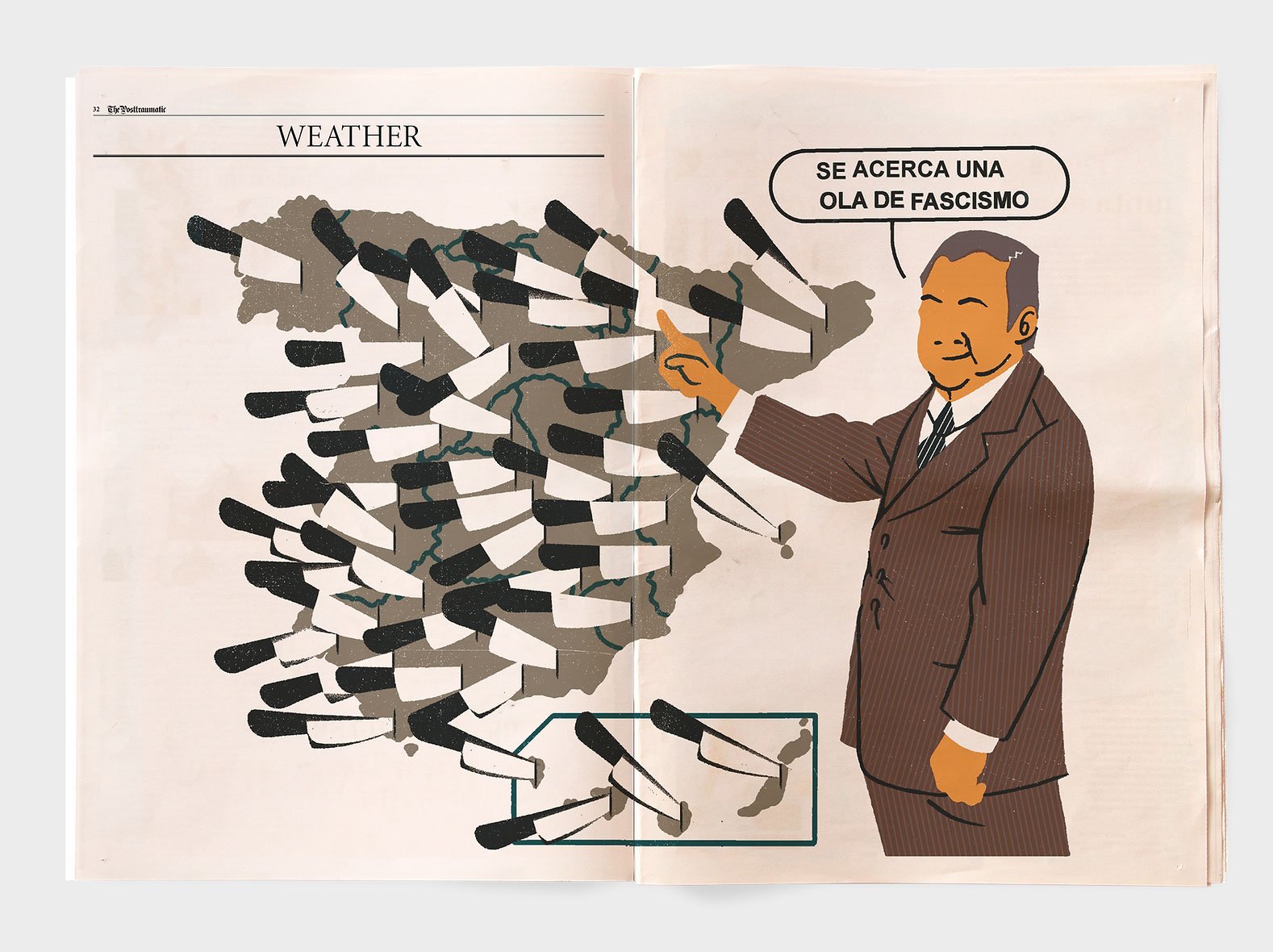

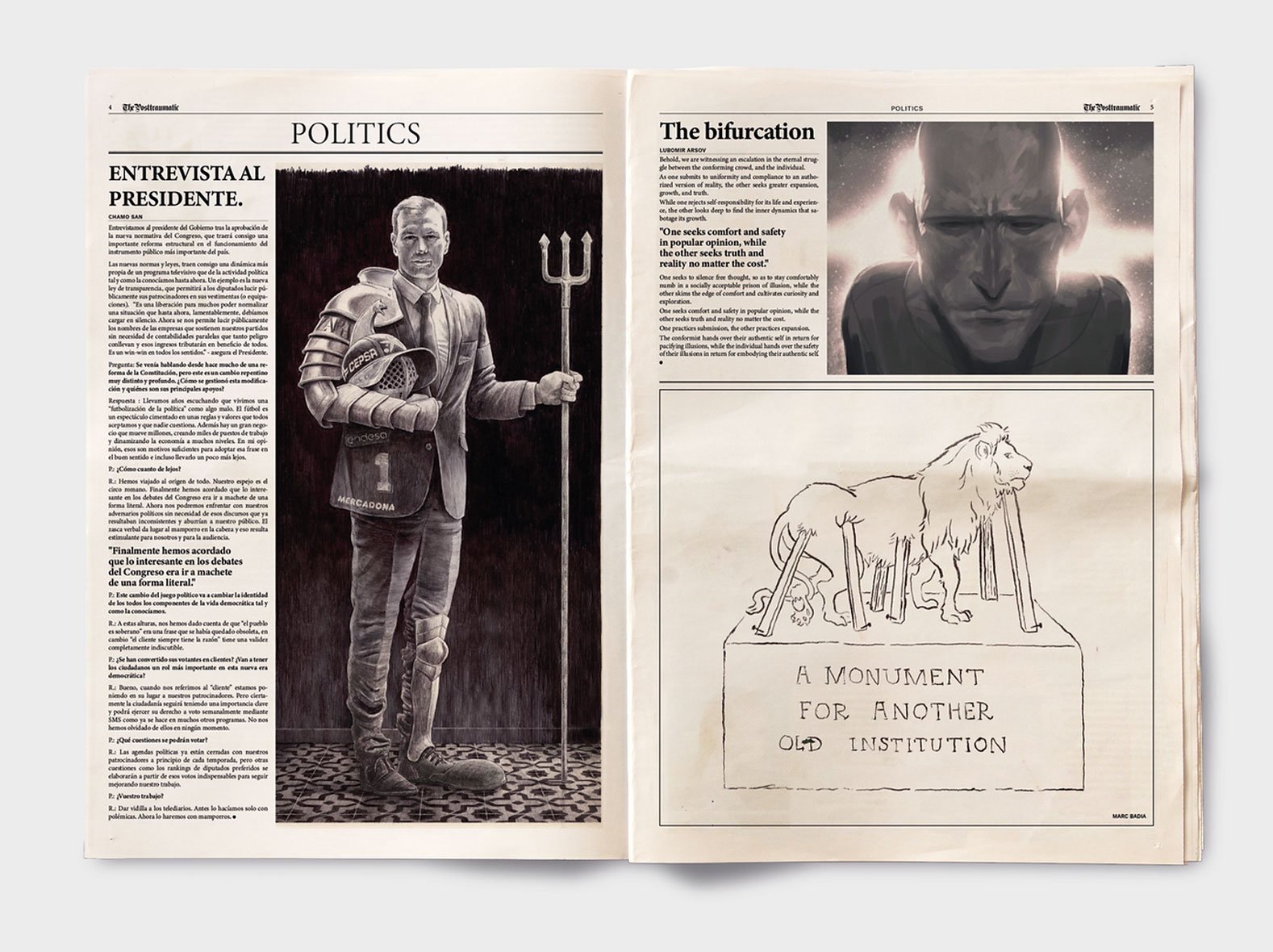

So, it means creating your own opportunity.
Yes. I don’t apply for scholarships anymore because it’s very difficult for them to give them to me, but when there are some I think I have to apply and then I come up with a project that I really like, I’m excited and the approach. Then I think I’d really like to develop it and maybe they’ll give me a grant, but then they tell me no. All the time I’ve been raising it, excited to do it and then you can’t do it. It’s a process I don’t like very much because it’s a bit disappointing.


“I’m not saying that everyone who plays objective games on the street is a profound philosopher, but they upset you in a way that can be interesting.”
In addition, you make urban art. Pieces that are ephemeral …
Mine is very ephemeral. I can get a picture of that piece as a result. In the world of urban artists, there are people who go out and do what they want and then there are the urban art festivals, which have been greatly reduced to mural projects because they last longer, the people she is happy because they have put colors on the city and the town hall as well. But when you escape a bit from this mural system and go to objects or installations it costs more because at the production level it is more complicated. And besides being ephemeral, only the photo remains, it is difficult for this type of artist we work with objects to participate in these urban art circuits. At The Posttraumatic I wanted to bring together all these people who are left out of this circuit, even though they do things quite well, but on an objective and conceptual level.
Beyond aesthetics?
Yes, people who give to the jar and who propose reflections with the interventions, many of the muralism as well, but there are many that are only aesthetic. I’m not saying that everyone who makes object games down the street is a profound philosopher, but they upset you in a way that can be interesting.
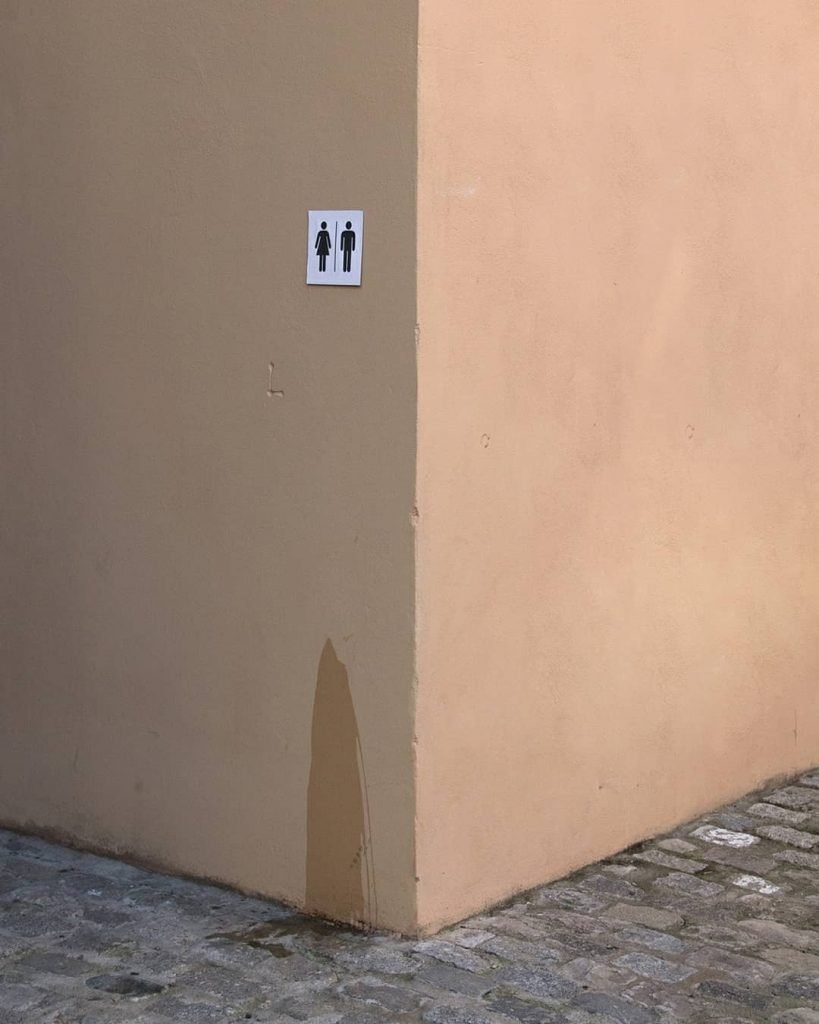
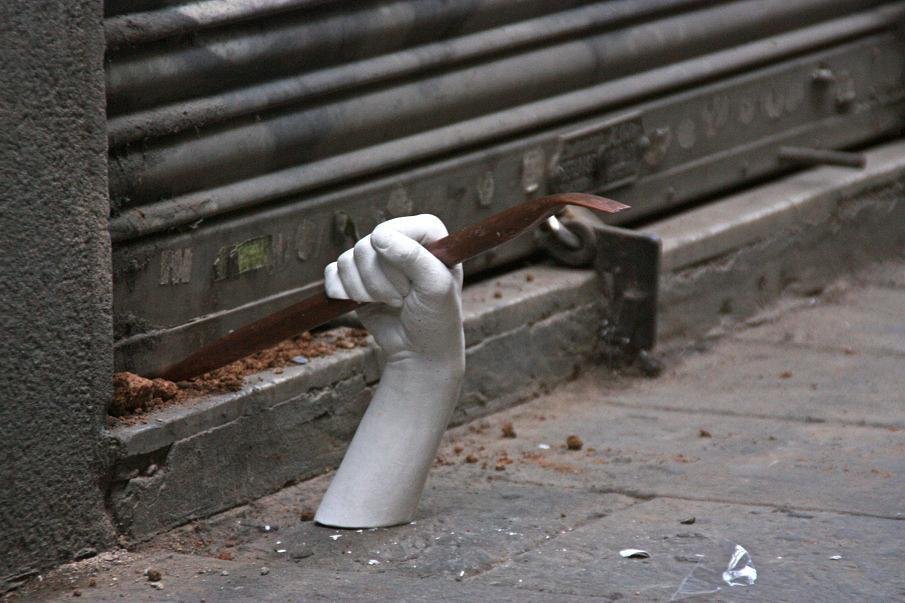
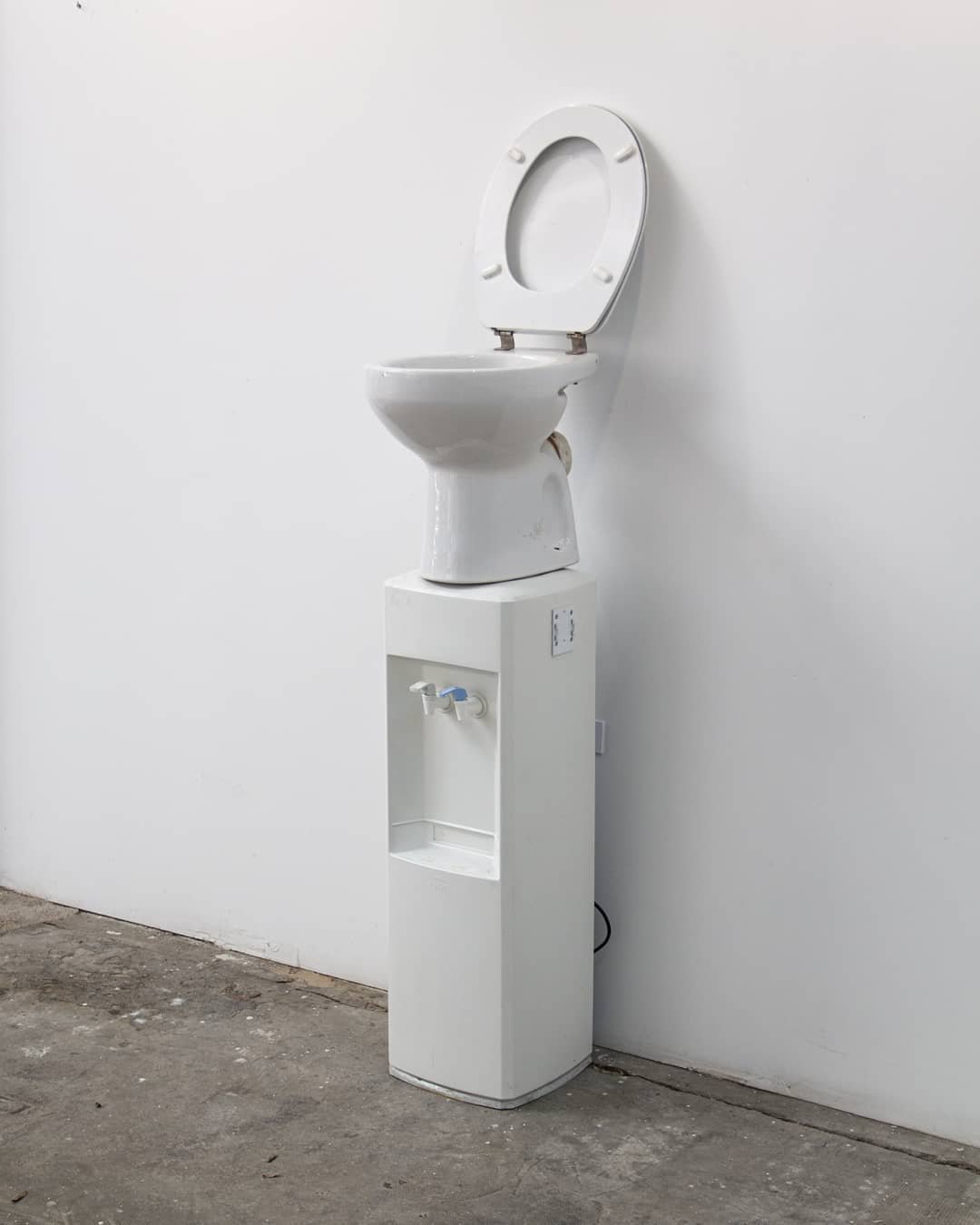

“When I consider any political or philosophical issue I feel very ignorant and for this reason I do not take it very seriously.”
The irony in your works is also upsetting.
With the irony, the joke, I feel comfortable with it. When I raise any political or philosophical issue I feel that I am very ignorant and for this reason I do not take it very seriously. I will be more in doubt about different ways of thinking or proposing. I’m not saying “capitalism sucks and you have to go to communism”. That to me would mean stating something too complicated and frivolous.
How to intervene at La Caixa ATMs? The rope and the hand that pointed like a gun if you were going to make money …
It was one of the first things I did … I discovered a handmade material and with a colleague I lived with we started making it at home. We made a raised fist in which we hung the helmet. It was 2008 and we started thinking about the kind of hands that could make us think about the economic crisis. We did this and went outside and hung it with a silicone that held up very little.


What is the legal risk of such actions?
Anything that comes out of graffiti, it comes out a little bit of people’s understanding and then they think what this guy is doing by putting this up, but they don’t think if it’s illegal or not, they just get surprised. Being ephemeral, if I catch the cop I take it off immediately and if not, I leave it. Graffiti is very criminalized.
When it comes to the creative process, is the content or the form first?
I want to explain something and then I think about which element can communicate it best. But there is also a freer part of finding objects that intervene and you can make fun of or that makes you think of something when you see it, but then the idea is less substantial.
Are you a very observant person when you walk down the street to find inspiration?
Not so much. Sometimes I do laugh in the middle of the street because I come up with ideas, and to see them flush it out, it’s really fun.


I ask you, because there is an intervention that I love that is a fence that as its shadow is placed creates the structure of a bed. How did you get here?
During that time I was taking pictures for a book on the future of design and I came up with a story about where bikes are stored. I wanted to make a chair with that and I started looking at the shadows and I had a hard time finding it and it didn’t work. And another day I was doing a story with a basketball court, I saw a fence that was out there and it was casting a shadow and I remembered that approach that didn’t work for me at the time. I made four stripes on the floor with spray and from one perspective it worked.

“I don’t care if my work disappears, because it’s not painted or an interior sculpture. Anything on the street will disappear.”
Light must be one of the most ephemeral things …
It’s an extremely ephemeral thing, because five minutes later it no longer worked.
How do you feel about most of your works being ephemeral?
It’s about understanding why you do it, if it’s worth the effort. I don’t care if my work disappears, because it’s not made with paint or an interior sculpture. Anything on the street will disappear.
And what is the most curious place where you have made an intervention?
At the Model I made a huge arrow made up of emergency exit signs. The arrow pointed to the opposite side of the actual exit. I also put sheets on the prison windows. Another place was the wall of a town hall, where it was written “claims sheet” in a place that was completely inaccessible. The context is 80% of the intervention.



And the most controversial intervention?
It’s controversial for me, for what I do. There is a room full of emergency exit signs, in which each arrow indicates a different place. This [work] is that part of me that doubts what he is doing and the art world. I feel lost when I walk into a gallery and I don’t know how to react and with this piece I wanted to think about it. There’s also some pretty crappy text that makes it an escape room and there are directions to what to do when you’re inside a gallery when you walk in to find out what to do and how to interact with what you’re encountering. And in this line I also made a series of paintings without the visual part and only with text. And I did some text directly telling people what they were seeing. For example, there is one that says “this is an oil portrait very similar to other oil portraits that already exist.” It’s a bit of a bitch, but I’m bitching too.


Wondering what art is, but also what it is for, right?
I had just studied product design, but I didn’t see the functionality of designing new things and then I started designing useless things, absurd objects, talking about it. The futility of designing things that already exist. I started designing useless things. I was hesitant about the world of design because there were a lot of useless things … and then I was photographed in the art world and now I’m doing supposedly useless things. So, I didn’t come up with something out of the ordinary, but then I found a book called “The Usefulness of the Useless” (Nuccio Ordine). . The author says that the useful thing is any act that we do in which the intention is to make money, and these are the majority of actions that we do at a professional level in our society. And that culture escapes this because its will is to communicate, transmit or reflect. Culture feeds on questions and reflections this way of working of this system that what it is going to do is make peels.

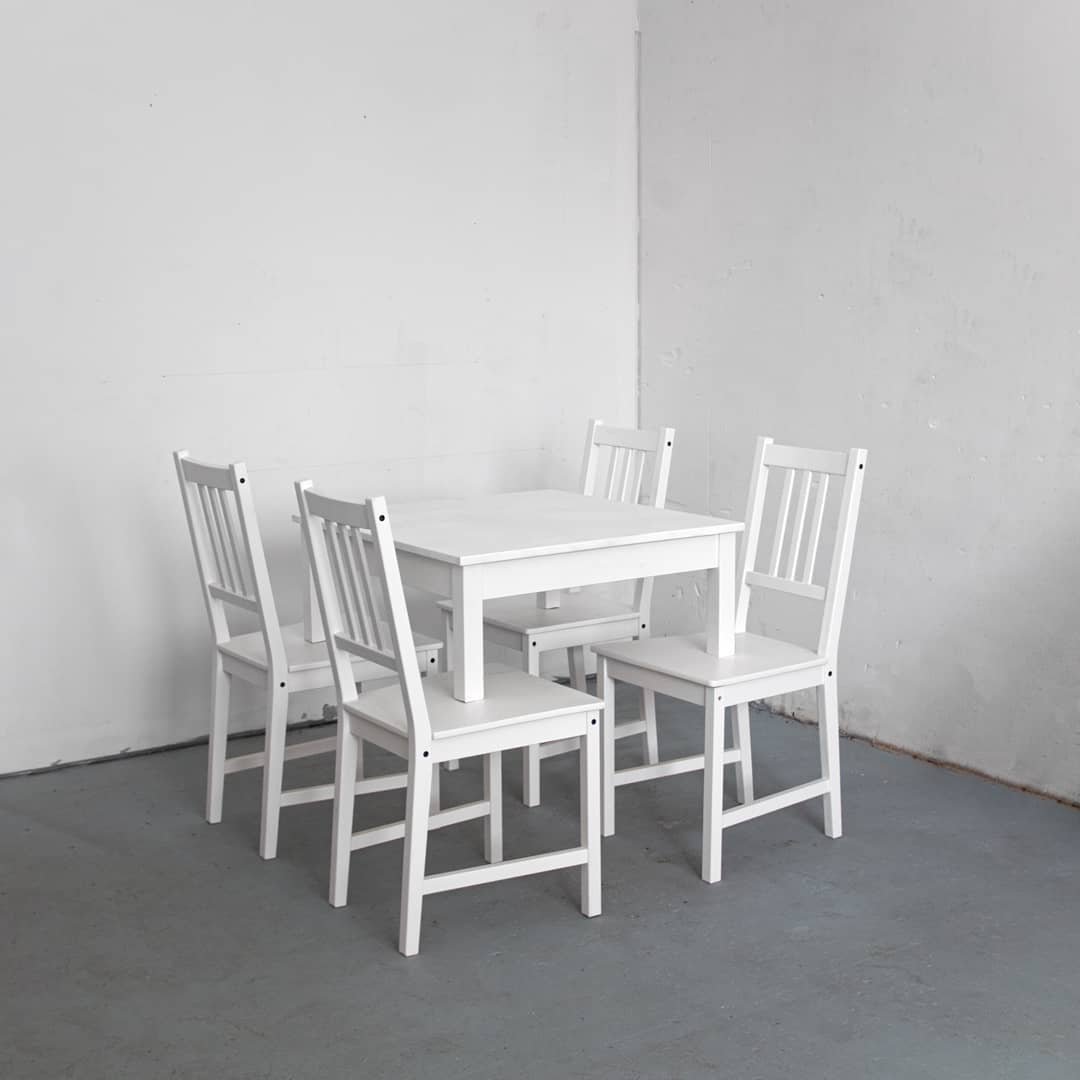

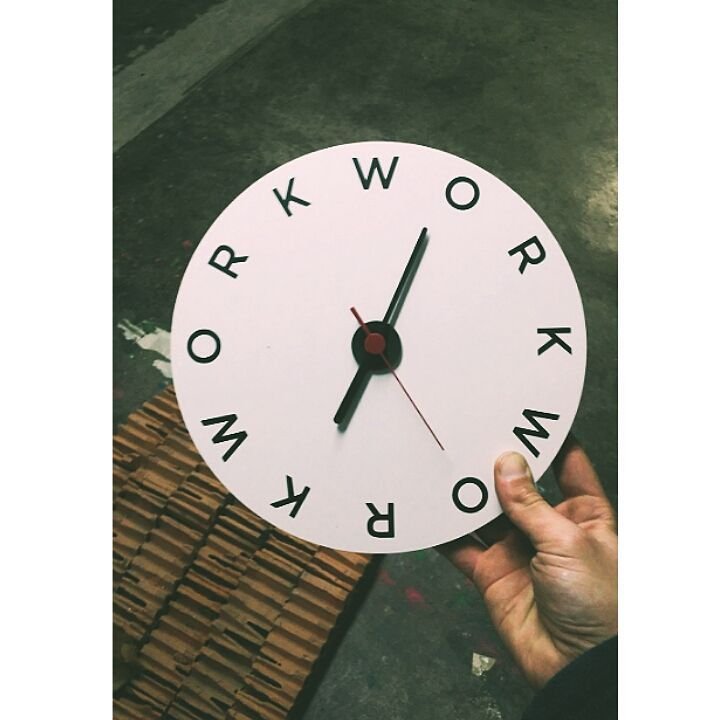
And at the level of references, who do you think of?
Well, there are many that I have contacted for The Postraumatic. Mobstr, Max Siedentopf, Willem de Haan…
And finally, do you recommend a movie, series, book and album?
Music, the group Forest Swords, the albums “Compassion” and “Engravings”. I hear them and they’re motherfuckers… They’re a little dark. From the book “Ask the Dust” by John Fante. I really liked “The Sopranos” as a series and “Luther” is very entertaining. In the movie, I’ve seen “Training day” many times.
INTERVIEW: MARTA LUQUE
MARCH 2022
MAUS®
VIEW MORE VIEW MORE VIEW MORE VIEW MORE VIEW MORE VIEW MORE VIEW MORE VIEW MORE VIEW MORE VIEW MORE VIEW MORE VIEW MORE VIEW MORE VIEW MORE VIEW MORE VIEW MORE VIEW MORE VIEW MORE VIEW MORE VIEW MORE VIEW MORE